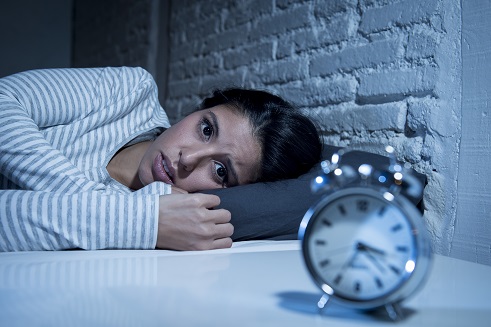Sleeplessness Linked to Less Exercise in Patients With Knee OA

Poor sleep quality is significantly associated with decreased physical activity in patients who have or are at risk for knee osteoarthritis, according to findings published in Arthritis Care and Research.
“This study is important because there are many health benefits of physical activity in patients with or at high risk for knee OA and even small amounts of physical activity can lead to meaningful improvements in health,” Abigail L. Gilbert, MD, MSCI, of the University of North Carolina Thurston Arthritis Research Center, told Healio Rheumatology. “One possible way to help individuals increase physical activity is to identify those with restless sleep and try to improve those patients’ sleep quality.”
To determine the relationship between self-reported sleep quality and objectively-measured physical activity among adult patients with knee OA, the researchers analyzed data from participants in the Osteoarthritis Initiative (OAI). They focused on 2,127 patients with knee OA who were enrolled in an accelerometer ancillary study at the OAI from 2008 to 2010. Among those participants, 1,892 provided complete data.

Gilbert and colleagues analyzed the participants’ physical activity as measured by the accelerometers, as well as clinical data provided in the OAI. In addition, they used multiple regression analysis to determine the patients’ physical activity, grouped by self-reported occurrences of sleeplessness, adjusting for demographic and medical confounders.
According to the researchers, among the 1,892 participants who provided complete data, 16% reported experiencing restless sleep 3 or more days within that past week. Those who reported having 3 to 4 days of restless sleep per week had 11.9% fewer weekly minutes of moderate-to-vigorous physical activity compared with those who were restless just once per week; for participants who reported 5 to 7 days of restless sleep per week, there was 23.7% less activity. Differences persisted after accounting for age, gender, race, BMI, comorbidity, knee OA severity and pain. The researchers also found that differences related to sleeplessness were attenuated by the presence of depression symptoms and low energy.
“There is a significant relationship between restless sleep and physical activity with depression and energy levels serving as possible mediators,” Gilbert said. “It is hard to know if poor sleep leads to low physical activity, or low physical activity leads to restless sleep — I anticipate the relationship goes both ways.”
Gilbert noted that clinicians may need to help patients improve sleep quality to assist in effectively increasing physical activity. She added that increasing physical activity could also help patients’ sleep quality, and stressed the importance of encouraging patients to increase their physical activity, even when they have low energy and feel tired.
“I would encourage physicians to discuss the many health benefits of physical activity in patients with or at high risk for knee OA,” Gilbert said. “Talking about the relationship between restless sleep and physical activity with patients and finding ways to help them focus on both concurrently could help them increase physical activity and improve their health.” – by Jason Laday
Disclosure: Gilbert reports no relevant financial disclosures. Please see the study for all other authors’ relevant financial disclosures.

